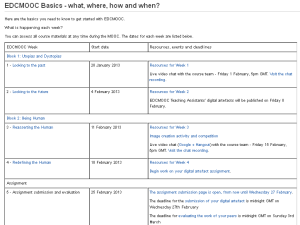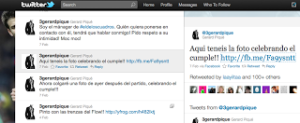 Quan algú accedeix a un curs, sigui o no en línia, agraeix que les coses estiguin ben clares.
Quan algú accedeix a un curs, sigui o no en línia, agraeix que les coses estiguin ben clares.
Quan algú diu que es connecta per aprendre, cal que pensem que sempre tindrà punts cecs, perquè la semiòtica no és ciència de correspondències unívoques, sinó contextualitzades i con dicionades per diferents àmbits de pertinença o habituds.
Quan algú és en un lloc per aprendre, sigui virtual o presencial, agraeix que algú noti que hi és i que l’escolta.
Són tres principis bàsics de didàctica. Cal dir-ho?
Aquesta entrada d’Àlex Vallès ens recorda els punts clau d’una guia didàctica:
- Presentació i introducció
- Justificació de l’acció/Expectatives
- Objetius d’aprenentatge
- Continguts
- Activitats
- Materials i recursos
- Temporalització
- Criteris d’avaluació
Altament rellevant la dinamització que proposa per al punt 2: ronda d’expectatives i col·locació en un lloc visible del curs. A l’aprenentatge en línia, podria gestionar-se a través d’una etiqueta twitter exposada al grup a través de qualsevol procediment ticker o simplement a través un bloc que anés mostrant les aportacions diverses amb cares i noms de les persones participants al curs.
S’hi troba a faltar, però, l’esment a les competències a potenciar.






